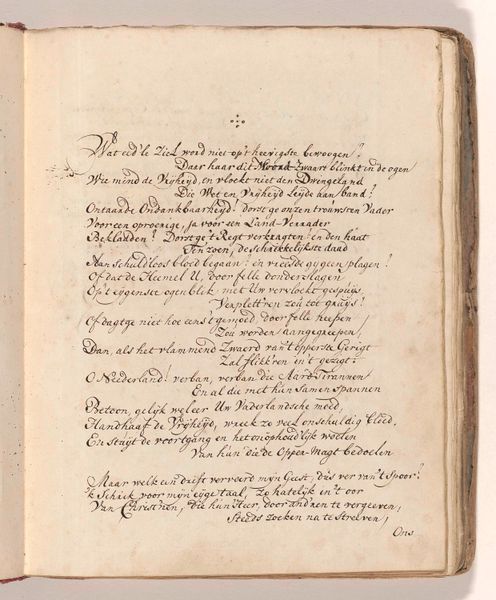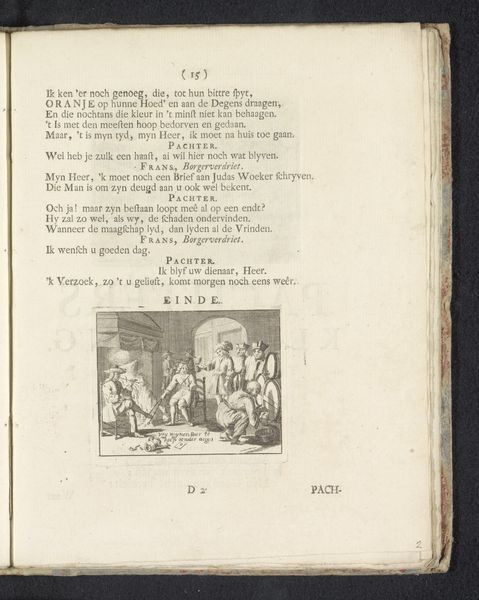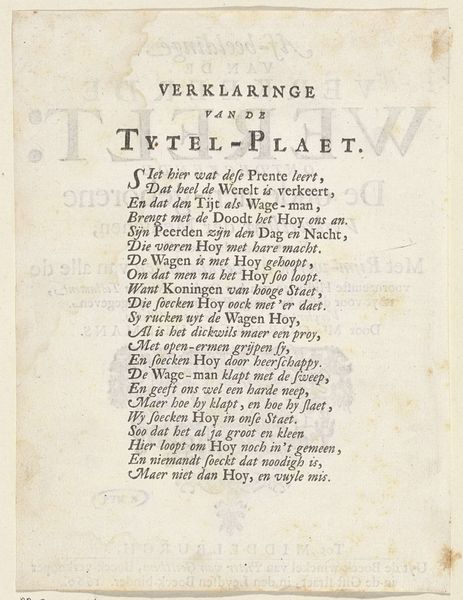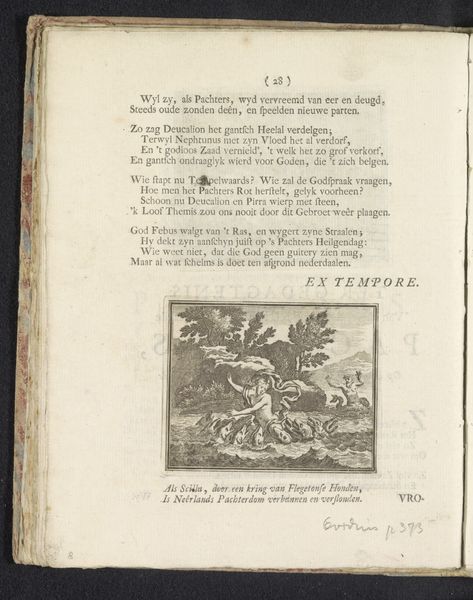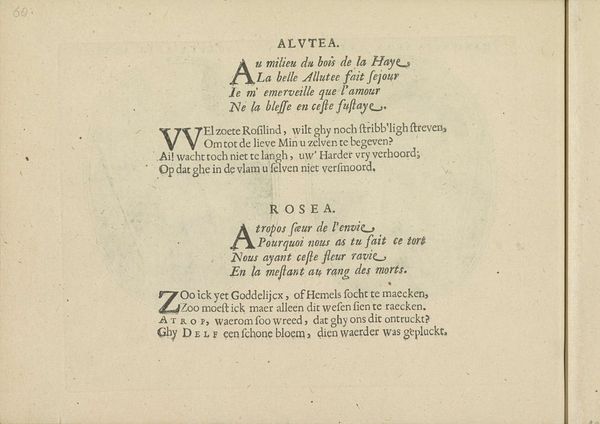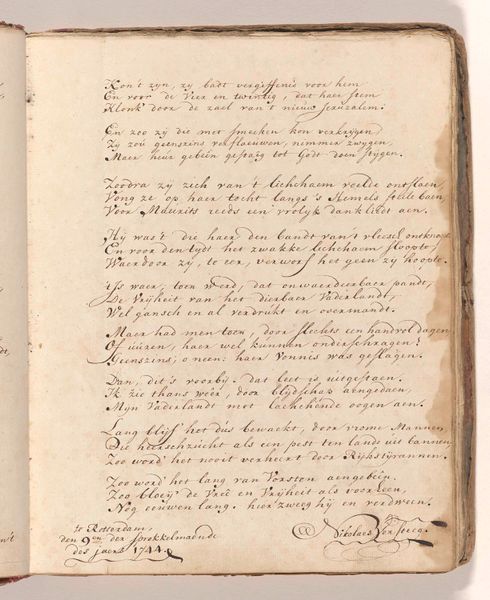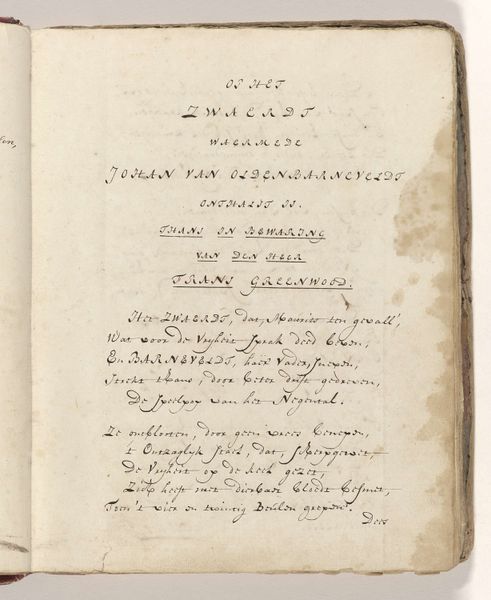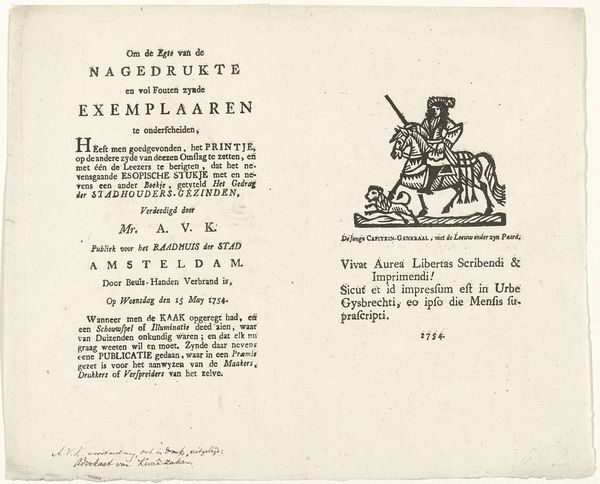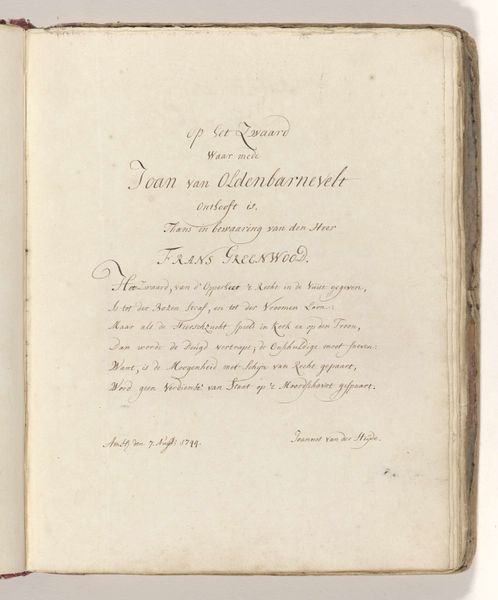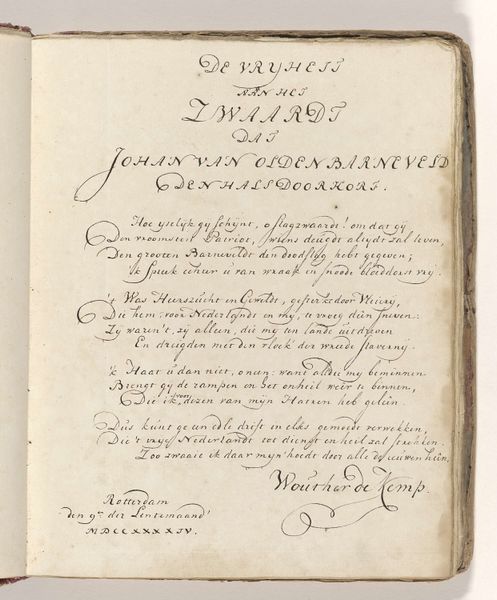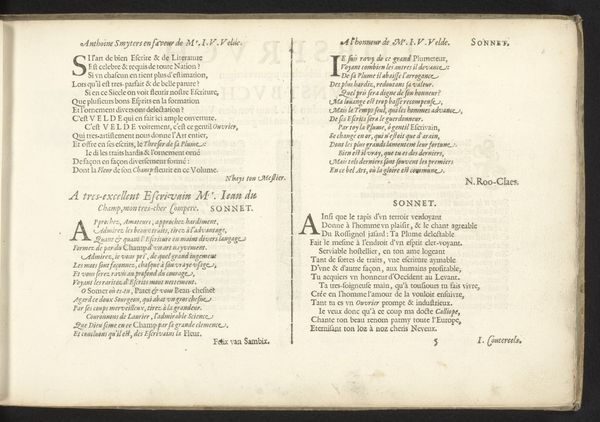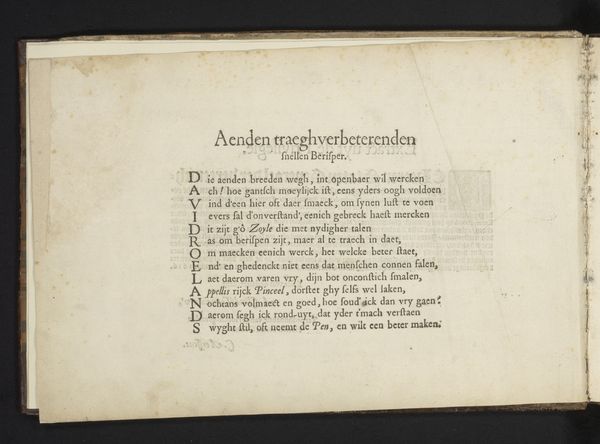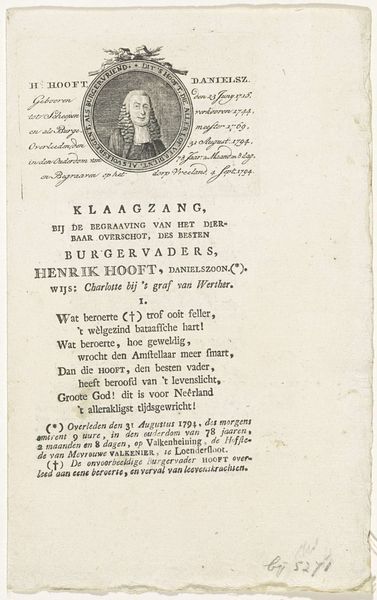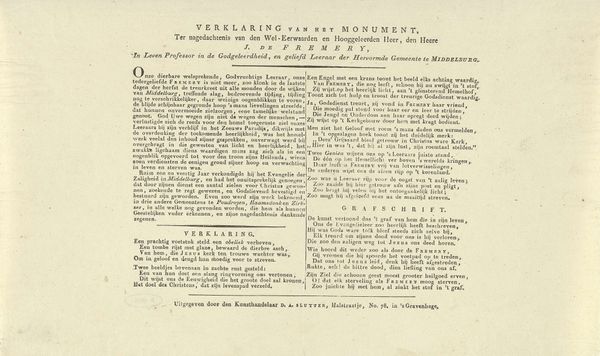
print, textile, paper, typography
# print
#
textile
#
paper
#
typography
Dimensions: height 170 mm, width 180 mm
Copyright: Rijks Museum: Open Domain
Editor: This is a print from 1784, called "Spotvers op het vertrek van de hertog van Brunswijk," which translates to something like "Satirical Verse on the Departure of the Duke of Brunswick." It's from the Rijksmuseum and just appears to be typography on paper. It looks like it was designed to be reproduced easily, maybe like a flyer? It's filled with Dutch text that I, unfortunately, cannot read, and I'm curious about the role such textual artworks might have played in their time. What can you tell me about this print? Curator: Well, considering the political nature described in the title and what you noted about its replicability, we must look at the print's public role in shaping sentiment towards Duke Louis. The late 18th century in the Netherlands was a time of growing tension between the Patriot and Orangist factions. The Duke of Brunswick was an important figure within that period of conflict, a military advisor, and, to many, symbolic of the ruling elite. This satirical print uses typography and easily reproducible paper to influence popular opinions and encourage debate about the role of leadership. The text likely mocked his departure and promoted a specific political position. Look closely; does the style of typography lend itself to specific impressions? Editor: It definitely does seem like it has a stern and accusatory quality to its construction. Is this artwork important because of the way in which this piece might portray this political conflict? Curator: Exactly! Consider how images and text work together – or against each other – to influence the public. How accessible was this for the common citizen? Where might people have seen something like this? Studying these questions provides a look at a slice of political culture in that particular time and how the public perceived those leaders. Editor: So, the printing medium made it easier to spread a particular political opinion, especially amongst everyday citizens? I hadn't considered that art could be so entwined with public opinion. Curator: Precisely. The very creation and distribution of this kind of printed text becomes a form of political activism in itself. These materials weren't confined to art galleries, but engaged in real-world political spaces, helping to shape attitudes and discourse. What else does this reveal to you?
Comments
No comments
Be the first to comment and join the conversation on the ultimate creative platform.
